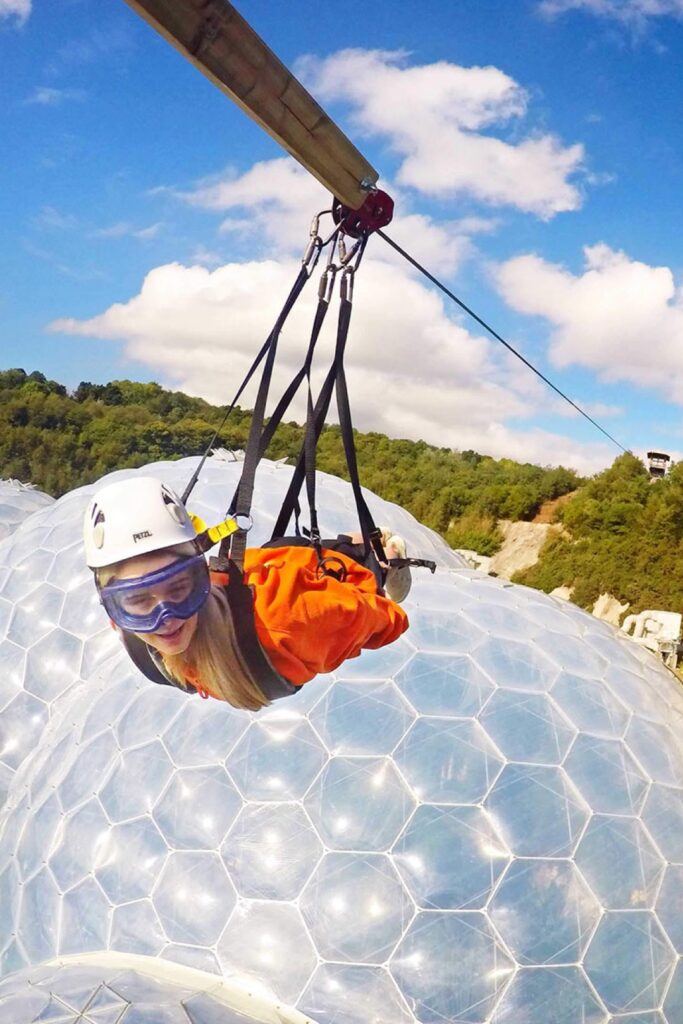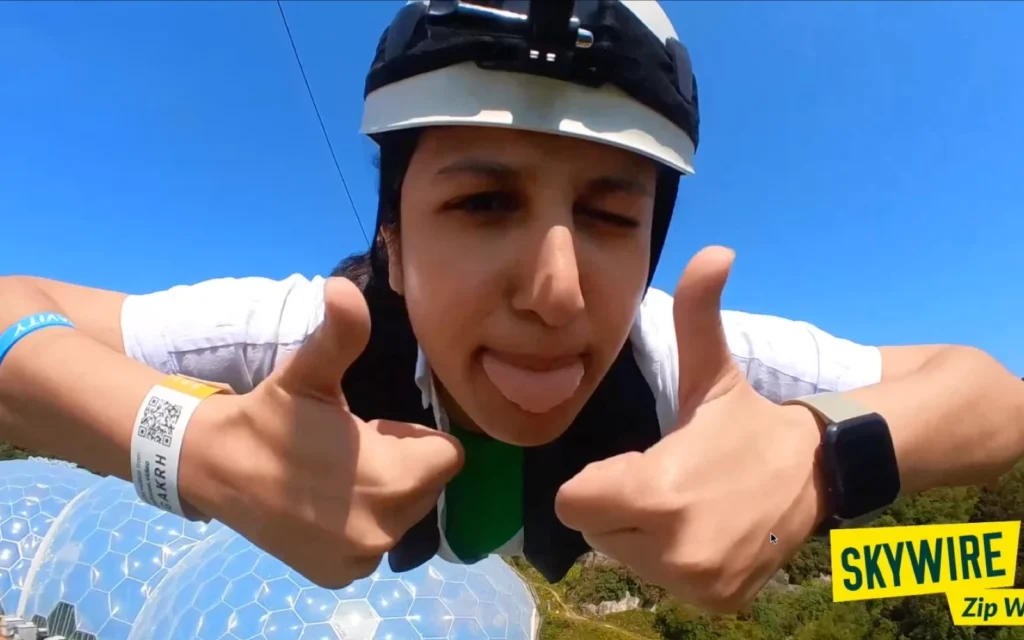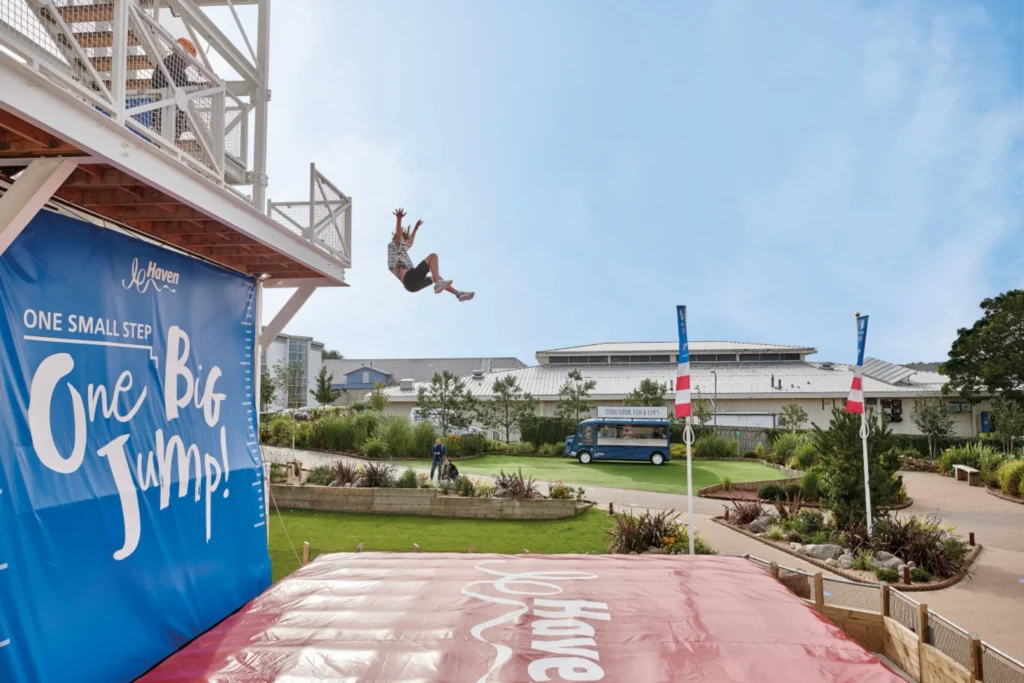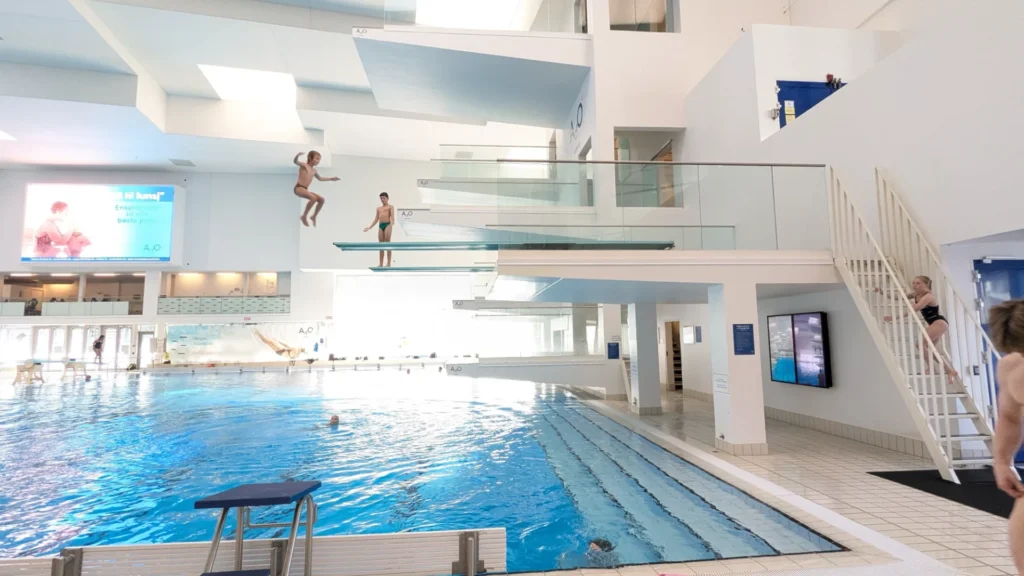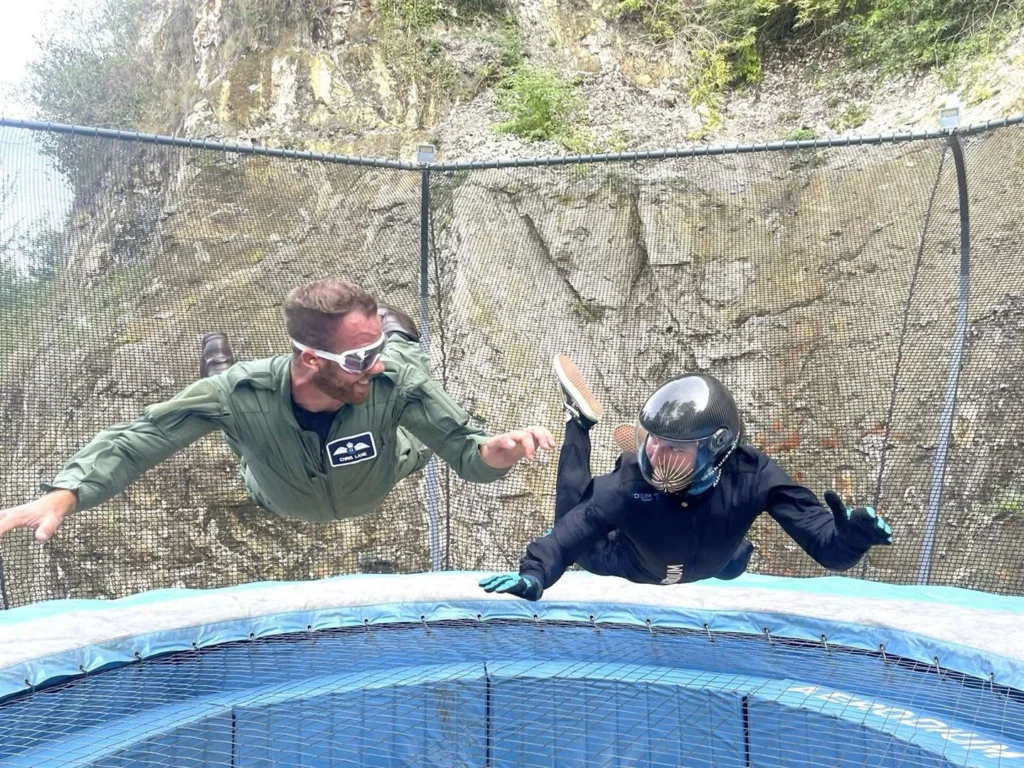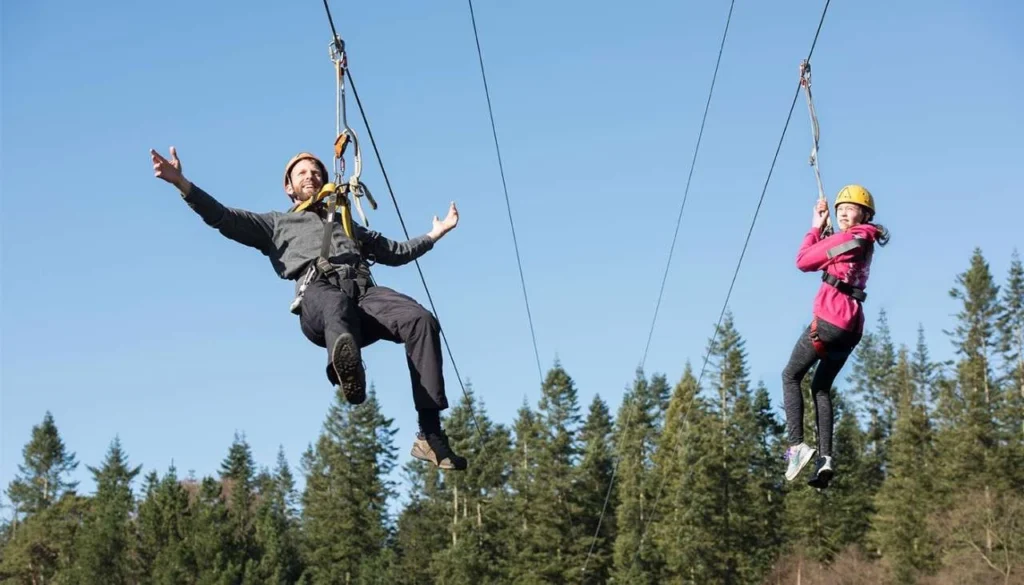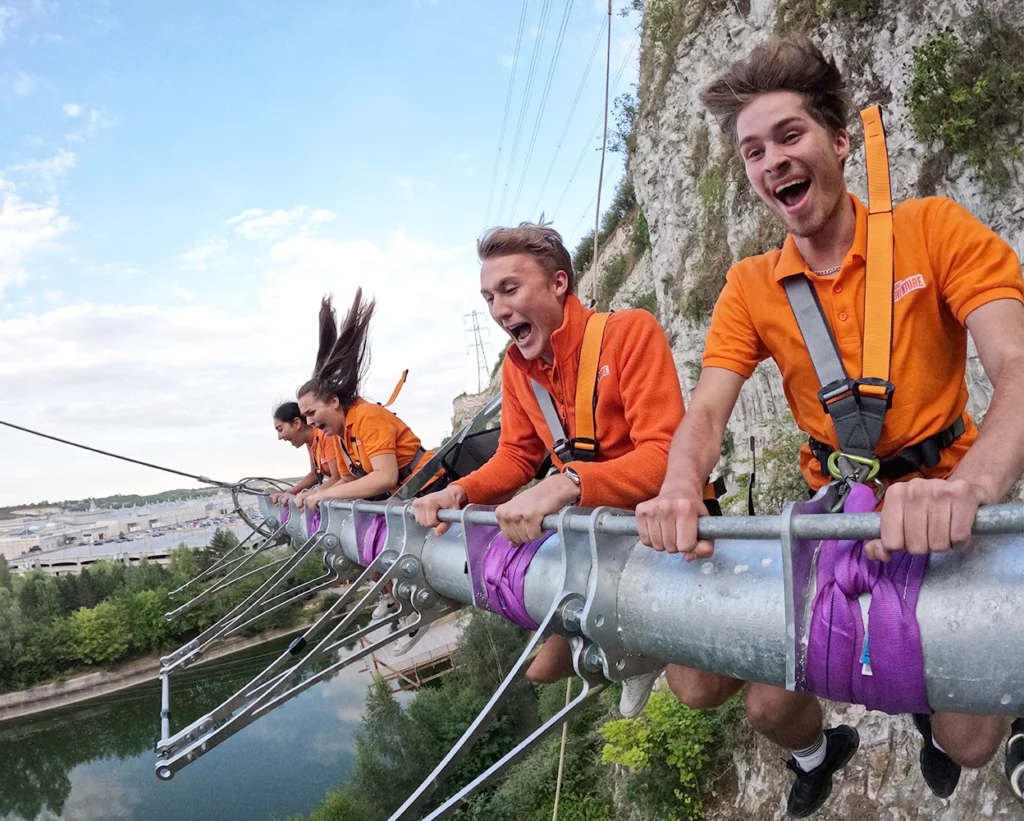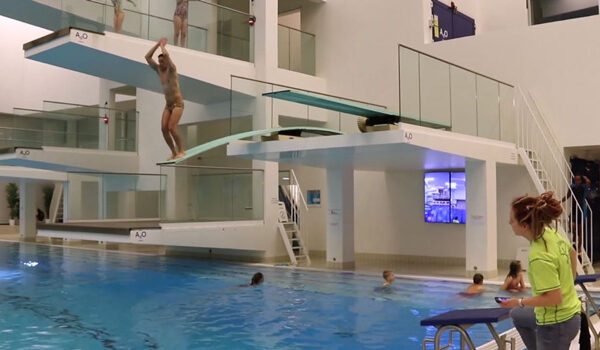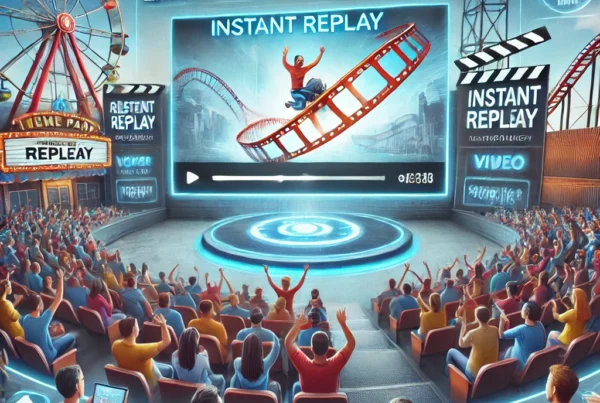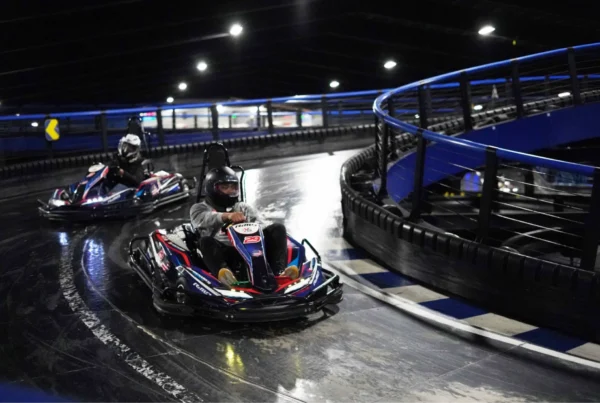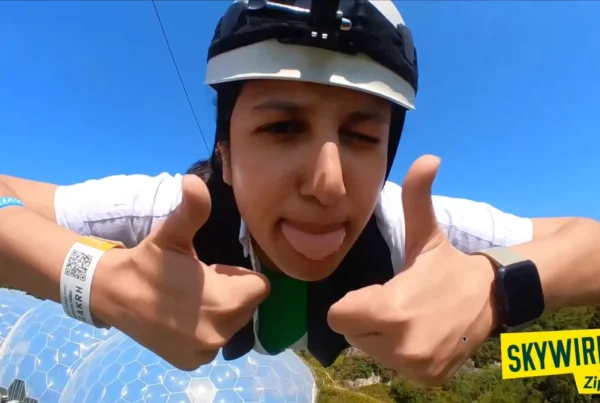Introduction to Automated Video Systems in Parks
Automated video systems have emerged as a transformative technology in the management of recreational facilities, notably within trampoline parks, interactive softplay venues, and family entertainment centres (FEC). These systems utilize advanced cameras and software to monitor activities, ensuring a seamless and efficient operation. By capturing real-time footage, parks can analyze visitor behavior, assess safety protocols, and optimize resource allocation.
At their core, automated video systems work through a combination of integrated hardware and intelligent software. The cameras installed throughout the park collect data on visitor interactions, facilitating dynamic insights into peak hours, popular attractions, and overall foot traffic. By employing artificial intelligence, these systems can identify patterns that aid managers in making informed decisions. For instance, knowing which days see the highest visitor numbers allows for improved staffing strategies in trampoline parks or sports clubs, thereby enhancing operational efficiency.
The significance of implementing automated video systems in parks cannot be understated. Not only do they contribute to a safe and enjoyable environment by ensuring adherence to safety rules, but they also assist in enhancing the visitor experience. Improved monitoring can lead to quicker response times in incidents, and consistent footage assures parents of their children’s safety in interactive softplay venues. Moreover, these systems enable parks to leverage data analytics to refine marketing strategies and tailor promotions, ultimately optimizing ROI.
In essence, automated video systems represent a cutting-edge resource for park management. By integrating technology, parks can enhance operational efficiency and safety, whilst delivering an exceptional experience that fosters customer loyalty. As we explore the profound influence these systems can have on ROI, it is important to understand their role in the broader landscape of family entertainment venues.
Understanding ROI and Its Importance in Park Management
Return on Investment (ROI) is a critical performance metric used to evaluate the efficiency and profitability of investments made in various business ventures, including recreational facilities such as trampoline parks, climbing centres, and family entertainment centres (FECs). In the context of park management, ROI quantifies the financial returns generated from funds allocated to enhancements, technologies, and experiences offered within these venues. Therefore, understanding ROI helps park administrators make informed decisions about resource allocation, leading to overall improved operational efficiency.
Measuring ROI is essential for park administrators as it directly influences investment decisions. For instance, when contemplating the expansion of services or the introduction of new attractions, such as interactive soft play venues or inflatable venues, administrators need to assess whether the anticipated returns justify the capital investments. Accurate ROI calculations enable administrators to prioritize high-impact upgrades that promise substantial revenue increases, ensuring sustainable growth in a highly competitive market.
Moreover, effective ROI measurement can lead to service improvements. For example, sports clubs or laser tag venues that regularly analyze their investment returns are more likely to identify areas for development or innovation. By adapting to the evolving preferences of guests, facilities can enhance customer satisfaction and foster repeat visits, which are crucial for long-term profitability. A park that has successfully tracked its ROI might reinvest profits into advanced customer engagement technologies or revamped facilities, further enriching the visitor experience.
Real-world examples emphasize the significance of calculating ROI, particularly in the current age of consumer-centric entertainment. Parks that strategically invest in new technology or unique attractions typically report higher guest satisfaction scores and increased footfall. Such achievements illustrate how understanding and effectively applying ROI can lead to sustainable victories in park management.
Key Features of Automated Video Systems
Automated video systems play a pivotal role in enhancing the efficiency and safety of various recreational spaces such as trampoline parks, interactive softplay venues, and family entertainment centres (FEC). One of the standout features is real-time monitoring, which enables operators to keep a continuous eye on activities within the facility. This feature is crucial for identifying potential safety hazards and ensuring compliance with operational protocols. By utilizing high-definition cameras, park managers can observe visitor interactions, maintaining a safe environment while adhering to safety regulations.
Data analysis is another integral component of automated video systems. By leveraging advanced analytics, parks can gain insights into visitor behavior, identifying peak hours and popular attractions. This information allows management to optimize staff allocation and improve resource management, ultimately enhancing the overall visitor experience. Furthermore, data analysis can assist in tracking the usage of different areas within trampoline parks and inflatable venues, facilitating better planning and investment for future improvements.
Visitor management is simplified with the incorporation of automated video systems. By recording and monitoring guest entries and exits, facilities can streamline their check-in processes. This feature also aids in managing capacity, which is particularly vital in sports clubs and climbing centres where safety and space restrictions are paramount. Additionally, the incident reporting functionality allows staff to respond promptly to any incidents that may occur, thereby improving safety measures across the park.
Lastly, integration with existing park technologies and infrastructure ensures a seamless transition to these advanced systems. Automated video systems can be aligned with access control protocols and other operational software, creating a unified framework that enhances the operational efficiency of laser tag venues and other recreational spaces. By bridging these technologies, parks can maximize their overall management capabilities.
Benefits of Implementing Automated Video Systems
The integration of automated video systems within parks, including trampoline parks, climbing centres, and inflatable venues, is becoming increasingly essential for enhancing overall operational efficiency. One of the primary benefits of these systems is the significant improvement in safety and security measures. By employing surveillance cameras and monitoring software, park operators can ensure a safer environment for families and visitors. Enhanced visibility around these interactive softplay venues not only deters potential misconduct but also allows for immediate response in the event of incidents, thereby fostering peace of mind for both staff and patrons.
Additionally, automated video systems contribute to improved resource management within these family entertainment centres (FEC). These systems can monitor foot traffic, identifying peak times and underutilized areas, enabling better allocation of resources. For instance, sports clubs and laser tag venues can adjust staffing levels based on accurate data, leading to a more enjoyable experience for visitors while also minimizing operational costs. The insights garnered from video analytics can inform strategic decisions on promotions and partnerships, thus optimizing overall revenue generation.
Moreover, the use of automated video systems enhances visitor engagement, a critical aspect of any operational strategy for trampoline parks and similar attractions. These systems can be harnessed to capture memorable moments during activities, which can subsequently be shared on social media or offered as part of promotional packages. By doing so, parks can create a more immersive experience that not only retains the attention of current guests but also attracts potential visitors through generated online buzz.
In conclusion, the implementation of automated video systems in parks presents numerous advantages including enhanced safety, efficient resource management, and improved visitor engagement. With evidence from various case studies demonstrating these benefits, it is clear that such systems are pivotal for the future of family entertainment venues.
Real-World Case Studies: Success Stories from Parks
Automated video systems have proven to be a transformative investment for various family entertainment centres (FECs) and recreational venues. This section delves into three distinct case studies that illustrate the successful implementation of these systems within trampoline parks, inflatable venues, and climbing centres.
The first case study involves Adventure Jump, a trampoline park that faced challenges in monitoring guest safety and operational efficiency. Their initial struggles included ensuring compliance with safety measures and optimizing staff workflows. After integrating automated video systems, Adventure Jump reported a significant decrease in accidents. The detailed surveillance allowed the management team to identify high-traffic areas requiring more staff oversight, ultimately enhancing guest safety and satisfaction. They also noted an increase in return visits by 25% over six months, indicating improved customer experience.
Next, we examine Fun Zone, an interactive softplay venue that previously relied on manual monitoring methods, leading to inconsistent guest interactions and management challenges. By adopting automated video systems, Fun Zone was able to streamline its operations. The technology provided analytics on peak usage times and visitor behavior patterns, allowing staff to better manage interactions and maintain a welcoming atmosphere. As a result, Fun Zone saw a 30% increase in active participation in organized activities and a corresponding uptick in positive visitor feedback, highlighting the success of the technological integration.
Lastly, Laser Quest, a laser tag venue facing operational inefficiencies due to outdated tracking methods, adopted automated video systems. This transition not only improved strategic game management but also enhanced player engagement through real-time feedback on gameplay. Metrics showed increased participation, with an impressive 40% rise in overall bookings after implementing these advanced systems. Visitors expressed greater levels of enjoyment, leading to enhanced online reviews and brand loyalty.
These case studies collectively highlight that by embracing automated video systems, parks can significantly boost their operational performance, improve guest safety, and optimize overall visitor satisfaction. The resulting positive metrics from trampoline parks, interactive softplay venues, and similar entertainment centres underscore the profound impact of this technological evolution.
Challenges and Considerations in Implementation
Implementing automated video systems in trampoline parks, interactive softplay venues, and sports clubs presents various challenges that must be considered. One prominent issue is budget constraints. The initial cost of acquiring advanced video technology can be substantial, especially for family entertainment centres (FEC) looking to upgrade their existing systems. Parks must assess their financial resources and determine the potential return on investment (ROI) that these systems may yield over time. A careful cost-benefit analysis can assist in making informed decisions about which systems will provide the greatest value.
Staff training is another critical factor when introducing automated video systems. Employees must possess a certain level of technical expertise to effectively operate and maintain these technologies. Without adequate training, staff may struggle to utilize the systems to their full potential, which can hinder overall efficiency. Parks should consider implementing comprehensive training programs to ensure that their personnel are well-equipped to handle new equipment and the responsibilities that come with it. This training can also boost employee morale as staff feel more competent and confident in their roles.
Furthermore, integrating new technology with existing infrastructure can pose significant challenges. For instance, trampoline parks or inflatable venues may have outdated systems that need to be upgraded or replaced entirely. This can cause disruptions to regular operations and may require additional time and resources. It is advisable for parks to work closely with technology providers to develop a tailored integration plan that meets their specific needs while ensuring minimal interruption to their services.
By understanding these challenges and proactively addressing them, parks can streamline the implementation process of automated video systems, ultimately enhancing customer experience and fostering greater operational efficiency in this competitive industry. In conclusion, thorough planning and resource allocation are essential for a successful transition to advanced technology in diverse entertainment settings.
Future Trends in Automated Video Technology for Parks
The future of automated video technology is rapidly evolving, promising to bring significant benefits to parks, including trampoline parks, interactive softplay venues, and family entertainment centres (FECs). One notable trend is the integration of artificial intelligence (AI) and machine learning (ML) into video systems. These technologies can enhance security measures, streamline operations, and personalize guest experiences. For instance, AI can analyze foot traffic patterns within trampoline parks and climbing centres to optimize staffing, ultimately improving service delivery while reducing costs.
Another emerging trend is the use of cloud technologies that facilitate data storage and analysis. By leveraging cloud computing, parks can manage large volumes of video data efficiently, enabling them to conduct real-time monitoring and historical analysis. This capability allows sports clubs and inflatable venues to track guest behavior and preferences, thus informing decisions on marketing strategies and service offerings that align with customer desires. Additionally, cloud solutions can provide parks with the flexibility to adapt their systems as technology advances, ensuring long-term scalability and relevance in a competitive landscape.
Furthermore, the growing trend of integrated systems could revolutionize how parks operate. As automated video systems become increasingly interconnected with other technologies—such as entry management and payment processing—parks can create a seamless experience for visitors. Laser tag venues can also benefit from these advancements, providing enhanced experiences that combine various attractions while ensuring safety and engagement.
As park managers look toward the future, it is essential to recognize these emerging trends and remain adaptable to capitalize on technological advancements. By embracing automated video technologies, parks can enhance operational efficiencies, improve customer experiences, and ultimately maximize their return on investment.
Steps to Maximize ROI with Automated Video Systems
To maximize the return on investment (ROI) from automated video systems within trampoline parks, interactive soft play venues, and other family entertainment centers (FECs), park managers should adopt a strategic and methodical approach. The first step is to set clear, measurable goals that align with the overall objectives of the park. Establishing specific metrics, such as visitor engagement levels or operational efficiency improvements, allows managers to track progress and measure the efficacy of the automated systems.
Next, effective training of staff is crucial. Employees must be well-informed about how to utilize automated video systems to their fullest potential, ensuring they understand the technology’s features and benefits. Regular training sessions can foster a culture of continuous learning and adaptation, encouraging staff to leverage video systems for enhancing visitor experiences in venues such as sports clubs, inflatable venues, and laser tag venues.
Regularly reviewing the performance of the automated video systems is also vital in optimizing ROI. By analyzing data collected through these systems, managers can gain insights into visitor behavior and preferences. This analysis can lead to data-driven decisions that enhance operations and service offerings. Whether it’s optimizing layout in climbing centres or adjusting the scheduling of activities, leveraging video analytics can significantly boost efficiency.
Collecting and incorporating visitor feedback is another critical step. Engaging guests to understand their experiences and gather their suggestions can provide valuable insights into how automated systems can better meet their needs. This feedback loop not only improves the park’s offerings but helps align video system strategies with broader management objectives, ensuring that innovations contribute to overall satisfaction.
By following these steps, park managers can effectively utilize automated video systems to enhance the visitor experience, improve operational efficiency, and ultimately maximize ROI.
Conclusion: Embracing Innovation for a Better Park Experience
In today’s competitive landscape, park administrators are increasingly seeking ways to enhance visitor satisfaction while simultaneously optimizing operational efficiency. Automated video systems stand out as a transformative solution that can revolutionize the management of trampoline parks, climbing centres, and other family entertainment centres (FEC). Through the integration of these systems, park owners can achieve a more streamlined approach to monitoring activities, ensuring safety, and maintaining high levels of customer engagement.
By leveraging advanced technology, automated video systems can provide real-time analytics that help in understanding visitor behavior within various interactive softplay venues, inflatable venues, and laser tag venues. This data can inform marketing strategies and operational improvements, ultimately leading to an increase in ROI. The ability to analyze foot traffic patterns and engagement rates offers park administrators valuable insights that were previously time-consuming or impossible to gather. As a result, the enhancement of visitor experiences will foster greater loyalty among guests and boost repeat visits.
Moreover, the deployment of automation in sports clubs and trampoline parks not only improves management efficiency but also contributes to a safer environment for patrons. With reliable monitoring systems in place, the capacity to respond swiftly to potential incidents increases, which is crucial in ensuring that all safety standards are met. Ultimately, embracing innovative technologies, such as automated video systems, is essential for the future of family entertainment centres. Such advancements allow park operators to focus on what truly matters: delivering memorable experiences for their guests while maximizing operational returns. In conclusion, the adoption of these technologies marks a pivotal step towards creating a better park experience for everyone involved.





